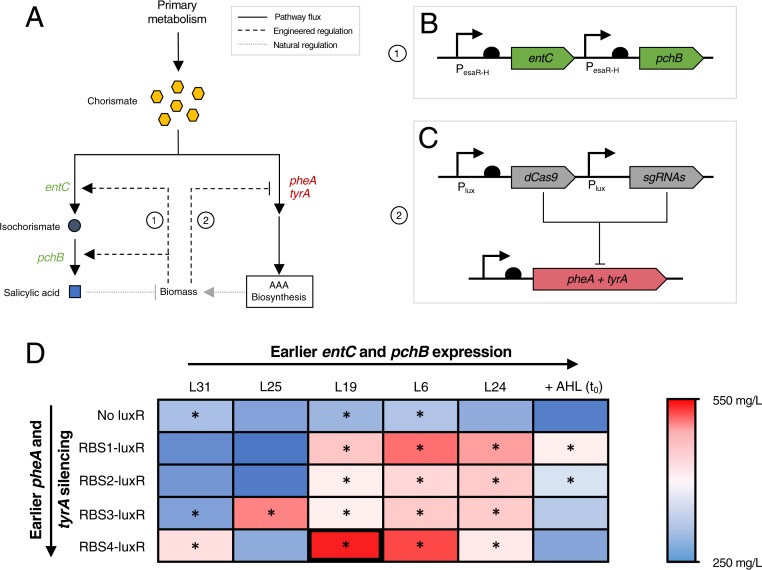Fig. 4.
Dual regulation in the salicylic acid pathway. (A) Schematic of the regulatory strategy. The genes encoding the salicylic acid pathway enzymes, entC and pchB, are expressed with increasing cell density to balance growth and generation of salicylic acid, a toxic product. pheA and tyrA are silenced with increasing cell density to elevate chorismate levels without introducing an auxotrophy. (B) Diagram of the up-regulation module. entC and pchB are under control of the PesaR-H promoter such that increasing cell density results in increased expression. (C) Diagram of the down-regulation module. dCas9 and sgRNAs targeted toward silencing pheA and tyrA are expressed from the Plux promoter. (D) Heat map of salicylic acid titers at varying EsaI and LuxR expression levels. Values represent the mean of triplicate trials. The rectangle corresponding to the top producer is bolded. *P < 0.01 compared to constitutive entC and pchB control with no AAA pathway down-regulation.

